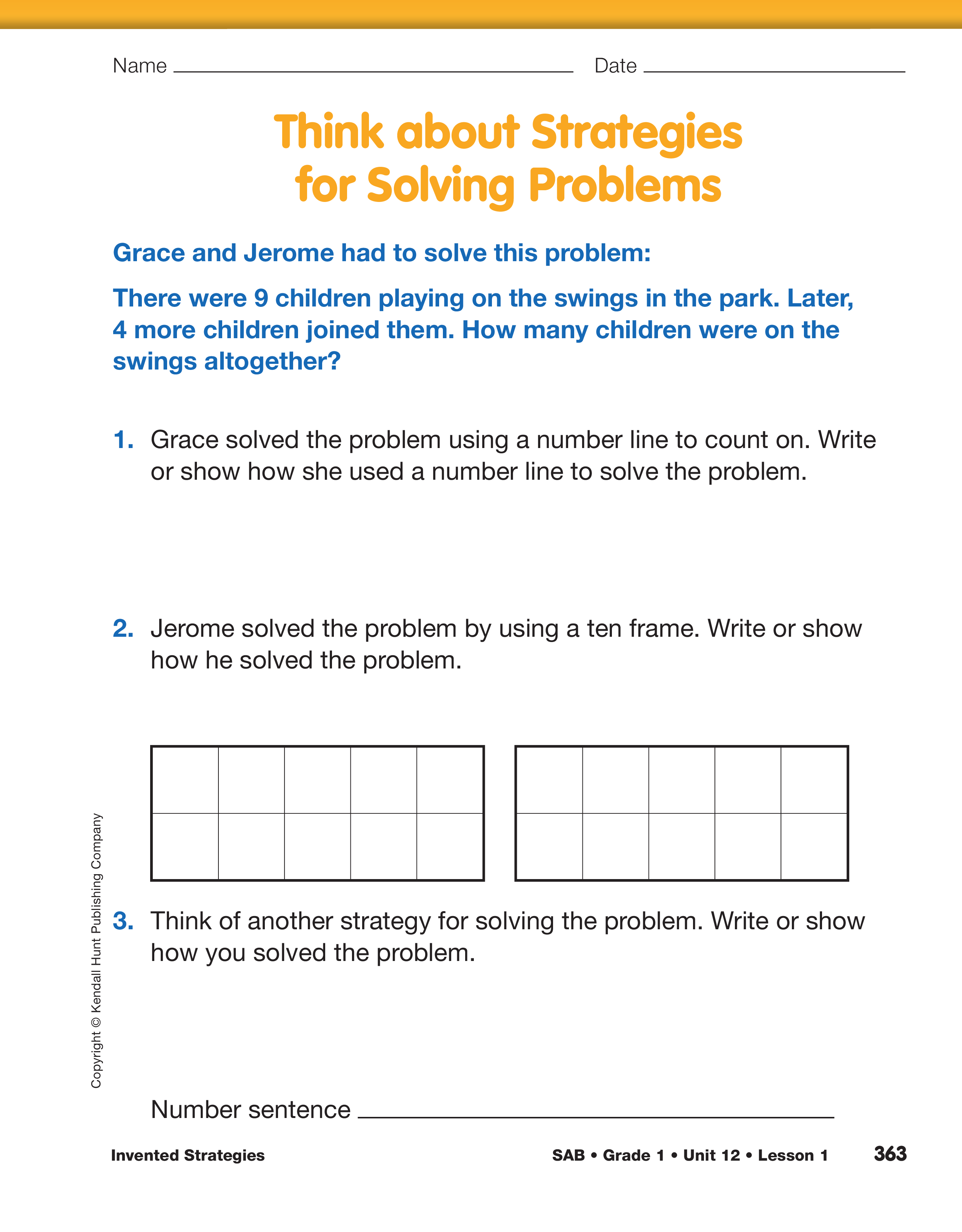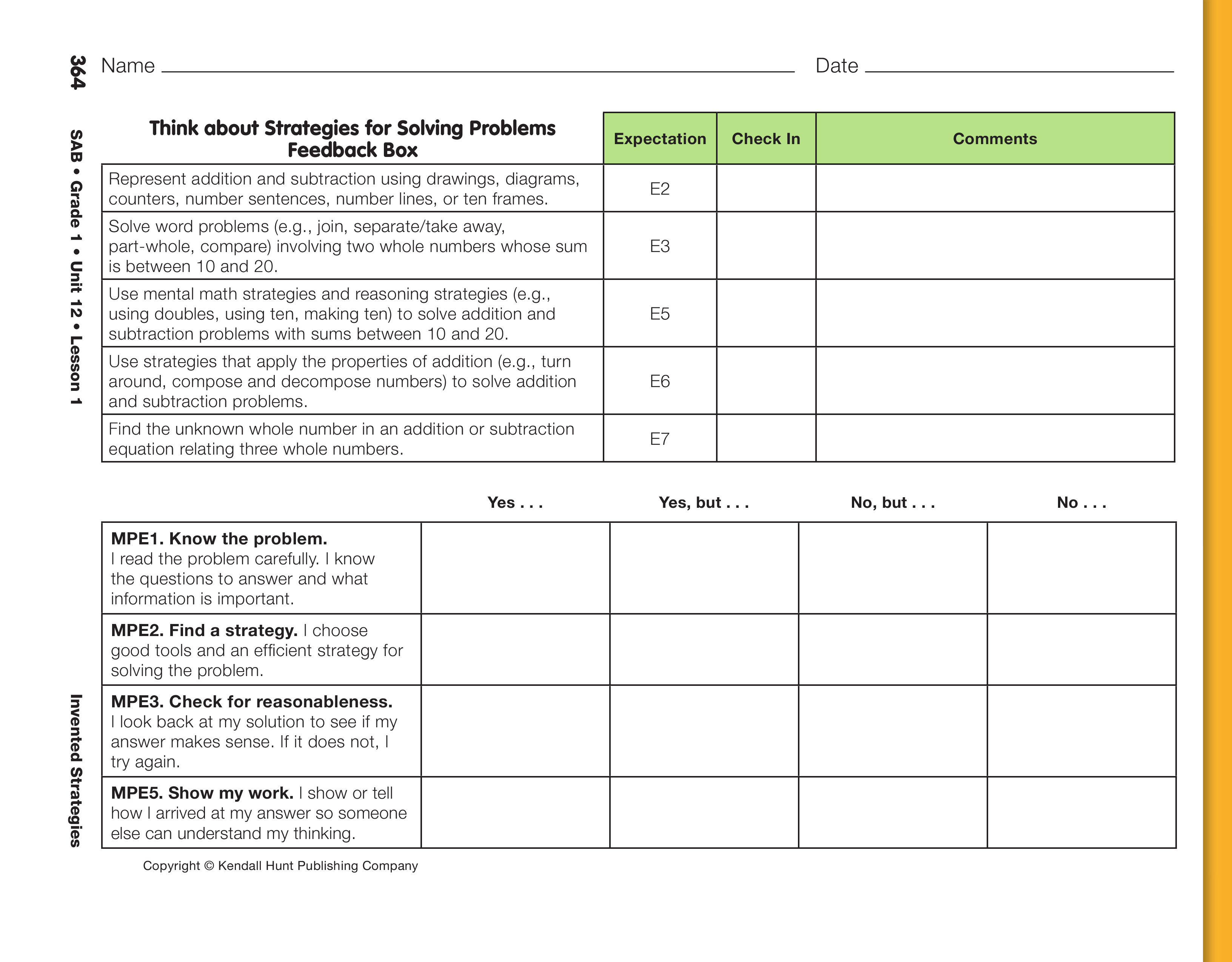Review the strategies on the Invented Strategies
chart. Make sure counting all, counting up, counting
back, making ten, using ten, and using doubles are
included.
Ask students to solve the following problem in two different ways:
Jerome had 8 pencils in his pencil box. He found
some more pencils and now he has 15. How many
pencils did he find?
Students can refer to the Invented Strategies chart.
Have students draw a picture or diagram or write an
explanation of their strategies.
Assign the Think about Strategies for Solving
Problems page in the Student Activity Book to assess
students' abilities to use various strategies. Before
assigning the assessment, display and direct students'
attention to the Math Practices page in the
Student Activity Book Reference section. Have connecting
cubes, number lines, 100 Charts, and ten
frames readily available.

Use the
Think about Strategies for Solving Problems in the
Student Activity Book with Feedback Box to assess students
abilities to represent addition and subtraction situations
using stories, drawing, diagrams, counters, number
sentences, number lines, or ten frames [E2]; solve word
problems (e.g., join, separate/take away, part-whole,
compare) involving two whole numbers whose sum is
between 10 and 20 [E3]; use mental math strategies and
reasoning strategies (e.g., using doubles, using ten, making
ten) to solve addition with sums between 10 and 20 and the
related subtraction problems [E5]; use strategies that apply
the properties of addition (e.g., turn-around, compose and
decompose numbers) to solve addition and subtraction
problems [E6]; find the unknown whole number in an
addition or subtraction equation relating three whole
numbers [E7]; know the problem [MPE1]; find a strategy
[MPE2]; check for reasonableness [MPE3]; and show my
work [MPE5].















